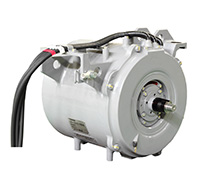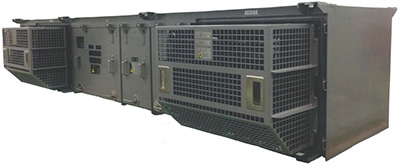News Releases
Toshiba's Electric Equipment Selected for Hankyu Train
- To cut energy consumption half -TOKYO—Toshiba Corporation (TOKYO:6502) today announced that it has received an order from Hankyu Corporation (Hankyu), a private railway company in Kansai region of West Japan, for key electrical equipment for new trains that Hankyu will introduce on its network in Osaka and the surrounding region. The order covers drive systems, auxiliary power systems and an integrated train information system.
Toshiba has channeled its capabilities in motors and inverters into an advanced drive system designed to significantly cut power consumption in commuter trains. The drive integrates Toshiba's totally enclosed Permanent Magnet Synchronous Motors (PMSM) with the company's newly developed 4 in 1 traction inverter equipment. Hankyu's tests of the drive system and its related regenerative braking system on one of its 8000 series trains confirmed a reduction in power consumption of about 50%.
The new drive systems will be installed in Hankyu's new 1000 series trains, which are due to enter service from autumn on. The trains will also install the integrated train information system and auxiliary power system. The integrated train information system will also be installed on Hankyu's new 1300 series train.
The 4 in 1 traction inverter unit is composed of four inverters and a cooling module, and one unit can drive four PMSM. In Toshiba's previous model, one unit drove two PMSM. On an 8-car train, a package of two inverter units are installed in cars two and six and power motors in the bogies in cars two and three and six and seven, respectively. The auxiliary power supply is installed into cars three and seven. This configuration is more compact and lighter than earlier drive systems and this, combined with the high efficiency of the PMSM and regenerative braking1, cuts power consumption.
The train information system provides passengers with information via a half-height Full HD 32-inch LCD display. The width of the display assures enough screen real estate to display the longest route information without font scaling. It also supports a range of split screen modes for simultaneous display of service information and videos. The auxiliary power system employs a dual stand-by-type static inverter2 that assures passenger comfort by keeping air-conditioners up and running even in the event of a circuit failure.
Toshiba has already supplied PMSM and traction inverter equipment for multiple train operators in Japan, and is using its PMSM know-how as a platform for the development of highly energy efficient products for the global market.
-
Notes:
- 1
- A brake that generates electricity by applying a reverse current to a traction motor. The electricity is returned to the overhead line.
- 2
- An electric power converter that converts direct current (DC) to alternating current (AC), which has stable voltage and frequency, and that supplies electricity to equipment such as air-conditioners.
 |
 |
| Permanent magnet synchronous motors | Traction invertor unit |
 |
|
| Image of Train information system | |


